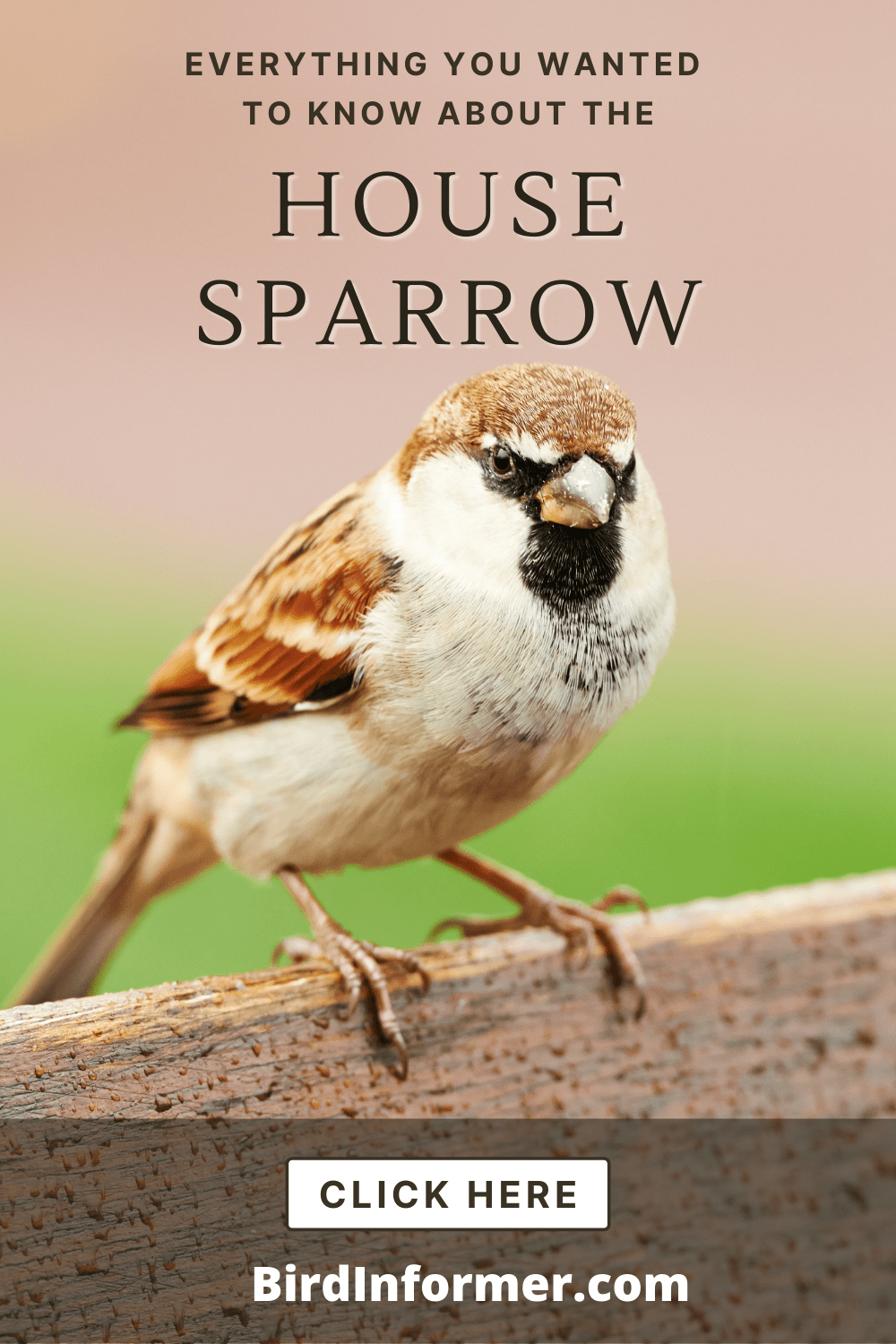Contents
- House sparrow facts
- House sparrow: how-to identify
- House sparrow bird vocalization
- Where You’ll See House Sparrows
- House sparrow diet
- House sparrow nesting
- House sparrow behavior
- How-to attract house sparrows
- House sparrow threats
- House sparrow fun & interesting facts
- House sparrow related species in this family
The House Sparrow is the most widespread bird found in most parts of the world. As they are not native to America, most people consider them as pests for competing with native birds for resources such as shelter. They are also easy to differentiate where males are slightly larger than females and have sharper black color.
In this article, we are going to cover a wide variety of topics related to the House Sparrow, such as:
- How to identify them
- How, when, and where they migrate
- Their diet
- How and where they nest
- And much more…
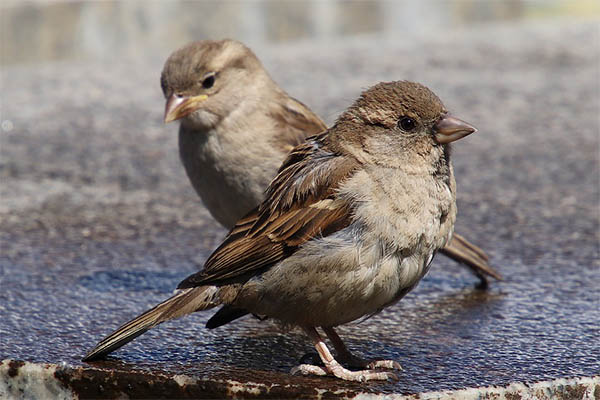
So, without any more delay…
Let’s jump right into it and learn more about the House Sparrow.
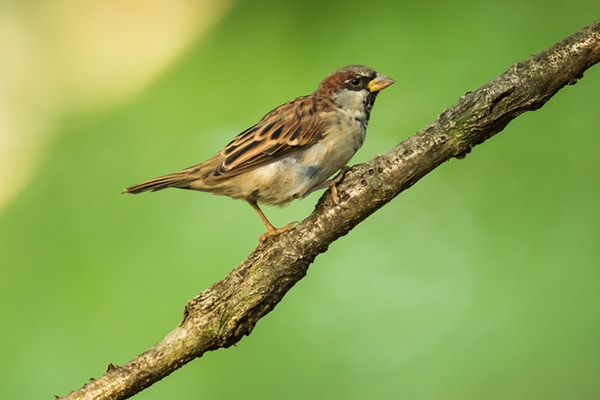
House sparrow facts
- Common Name: House Sparrow
- Scientific Name: Passer domesticus
- Scientific Family: Passeridae
- Life Span: 3 years
- Size: 5.9 to 6.7 inches
- Wingspan: 7.5 to 9.8 inches
- Weight: 0.9 to 1.1 oz
- Conservation status: Least Concern (LC)
House sparrow: how-to identify
House sparrows are small birds characterized with a chunky body, a full chest, and a large round head. They also have short legs and short, thick bills. Both males and females feature a brown, black, and white color pattern in their wings and back, with greyish underparts.
Differences Between Male & Female
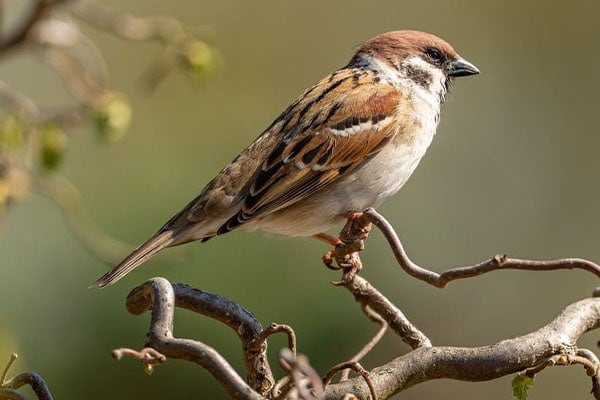
Although male and female House Sparrows have brown, black, and grayish-color overall, the difference between them is noticeable. Males wear a brighter brown color compared to the females that look plain and dull. On top of that, males are found to have a black bib while females do not.
Differences In Summer Plumage vs Winter Plumage
House Sparrows don’t have significant changes in color between summer and winter. But, it has been found that their weight increases by 70% in preparation for the cold. It has also been observed that non-breeding males have yellowish bills instead of black during the summer season.
House sparrow bird vocalization
Where You’ll See House Sparrows
House Sparrows are birds seen worldwide. They are known to be native birds in Eurasia and North Africa but were slowly introduced to different parts of the world, including America.
These birds are known to be very close to people and have no trouble staying in buildings. They mainly survive when they are close to humans, which means you’ll often find them in cities, suburbs, and farms instead of the woodlands and forests.
House sparrow bird migration
House Sparrows are non-migratory birds. This means that they stay in the same place, sometimes flying a few kilometers away from their birthplace but never far enough, no matter what season it is.
House sparrow diet
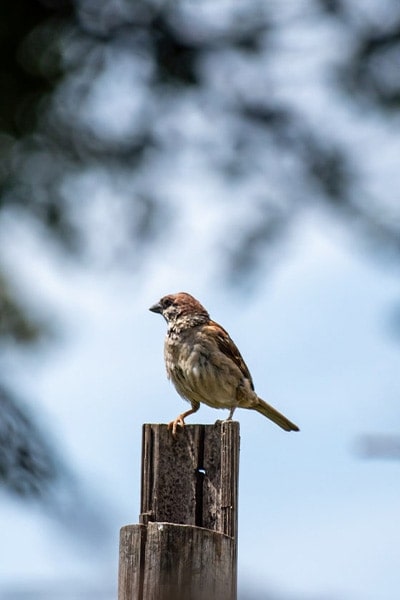
House Sparrows are omnivores, which means they eat different food choices, both plants and animals. They are everywhere, ready to grab any small bits of dropped food from people. They visit gardens, catch insects and feed them.
The majority of their diet consists of weed, seeds, and other plant materials like berries, grapes, apples, nuts, cherries, pears, plums, peaches, wheat, oats, and more. They also eat some insects, especially during the breeding season.
Often they will eat crumbs of bread from humans, and they would also frequently visit bird feeders. They would often search for food on the ground, hopping instead of walking.
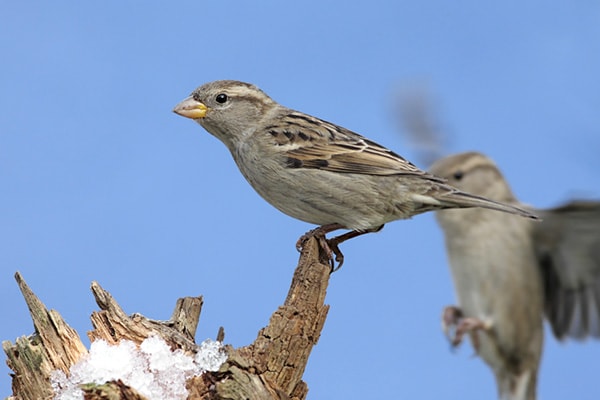
House sparrow nesting
- Clutch Size: 1-8 eggs
- # of Broods: 1-4 broods
- Incubation Period: 10-14 days
- Nestling Period: 10-14 days
- Egg Description: Light white to greenish white or bluish white, usually spotted with gray or brown
House Sparrows usually build nests next to each other so neighboring nests can share walls. These are made around February to May and are often found in holes of human-made structures like buildings, streetlights, signs, and more. Sometimes, they even build their nests in vines or would compete for the nest boxes.
Nests are made of coarse dried greenery such as grass, weeds, twigs, and trash. It’s often placed in circular form with a hole in the middle and then lined with soft materials like feathers.
House sparrow behavior
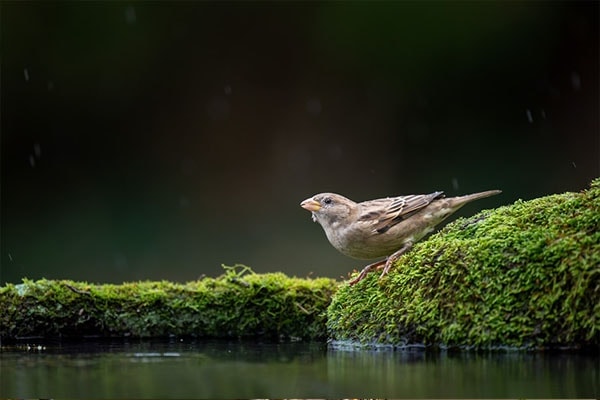
House Sparrows are very social birds, often eating in crowded flocks. However, when it comes to protecting their nesting site, they can be aggressive, especially with other birds.
These birds forage for food on the ground, often seen hopping than walking. They are also seen to take dust baths where they throw soil over their feathers like they’re taking a bath.
There’s also a dominance hierarchy with this group of birds where males dominate females, especially in winter. However, when spring and summer come, female House Sparrows become more assertive.
The black bib on their throat also shows some kind of authority. It has been found that male House Sparrows with larger bibs dominate over male birds with less black. This is why when they want to show off to a female bird, they would usually open up their chest to show their bib.
How-to attract house sparrows
As House Sparrows are non-native birds, they are mostly considered a menace as they tend to compete with native birds for resources in backyards. They can be seen everywhere that even if you don’t feed them, they’ll be around your home.
These birds are one of the easiest birds to attract. Because they mostly forage on the ground, you can scatter seeds on your backyard, the floor of your balcony, or on the ledge. You can even set a small tray of seeds on the ground or hang it on a tree, so it’s easier to notice.
Planting fruit-bearing trees and shrubs are also a great way to provide food for these birds. And if you want them to nest, provide some nest materials that these birds can find.
Most of all, don’t forget to provide these birds some water.
House sparrow threats
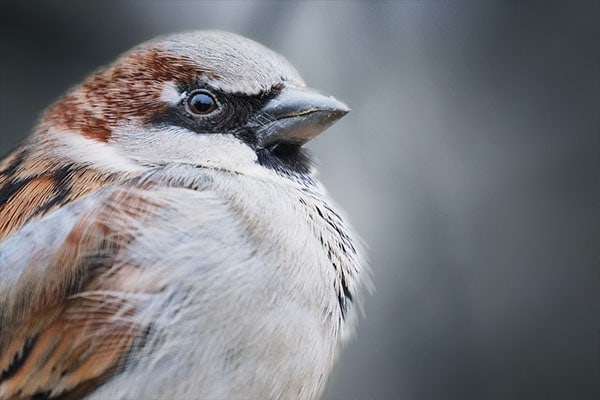
A decline in the population of the House Sparrows has been observed due to some developments made. However, this doesn’t seem to significantly threaten the bird’s numbers, making them still belong to the “least concern” group.
Predation is a common threat, just like with many other bird species. For these birds, hawks, owls, falcons, shrikes, cats, dogs, raccoons, and snakes are common predators.
House sparrow fun & interesting facts
- House Sparrows are native to Eurasia and North Africa.
- House Sparrows were introduced to New York in 1851.
- Around 1889, it has been reported that House Sparrows have attacked 70
- different bird species.
- These birds can swim if they need to, especially when escaping a predator.
- They are very at ease with humans.
- The oldest recorded House Sparrow was 15 years and nine months old.
- Eurasian Tree Sparrow

